|
GENERATIONS DAY
CULTURAL RESOURCES
Sunday, July 7, 2013
Justin M. Shamell, Guest Cultural Resource Commentator
Associate Minister, Lindsay Street Baptist Church, Atlanta, GA
I. Introduction
Over the past 25 years, traditional churches, regardless of denomination and race, have noticed a decline in the number of young adults attending their churches. What has caused this generation gap in our churches? Does the younger generation no longer find church relevant in their lives? Has the Black Church’s typically conservative theology become irrelevant for modern times? Does the Church practice discrimination against members based on their age and financial support? Does the younger generation desire to push elders out of church leadership positions and when unsuccessful choose to leave? These and related questions are being asked all over the country and need to be addressed in our congregations.
Rev. H. Bernard Young believes some of the causes of the generation gap in our churches are: the gap caused by traditions; the issue of not accepting and adapting paradigm shifts; and focusing on the differences instead of on what we have in common. He offers his solutions for connecting various generations in his book Bridging the Gap: A Practical Guide for Connecting Generations of the Church. I recommend it to churches.
In our congregations, each generation brings to the table a variety of experiences, knowledge, and creativity that will help move the Church forward and help her remain relevant in these troubling times. It is important for the Church to allow the following generations—The Good Warriors (1909–1928), The Lucky Few (1929–1945), Baby Boomers (1945–1965), Generation X (1965–1982), New Boomers (also called Millennials and Generation Y) (1982–2001), and Generation Z (2001–Present)—to feel affirmed and accepted as the Church practices radical inclusion. Can you hear Generation X talking to the Good Warriors Generation to gain tips on how you make it during difficult financial times? Can you imagine members from the Lucky Few Generation and New Boomers sitting at the dining table breaking bread and sharing stories? What a sight it would be for Baby Boomers and Generation Z to blend their voices as members of a church Praise Team. The possibilities are endless and significant if carried out with the intention of keeping the Church relevant and including all of its members in meaningful ways so that God is glorified and communities and families are helped.
II. Songs That Speak to the Moment
Each generation has songs that speak to them and issues and experiences that identify their generation. Listed below are songs representing the various generations listed above.
The Good Warriors & The Lucky Few Generations
A Charge to Keep I Have
By Charles Wesley
Music by Lowell Mason
A charge to keep I have,
A God to glorify,
A never-dying soul to save,
And fit it for the sky.
To serve the present age,
My calling to fulfill:
O may it all my powers engage
To do my Master’s will!
Arm me with jealous care,
As in Thy sight to live;
And O Thy servant, Lord, prepare
A strict account to give!
Help me to watch and pray,
And on Thyself rely,
Assured, if I my trust betray,
I shall for ever die.1
Baby Boomers Generation
Jesus Will
by Rev. James Cleveland
Verse
Who opened doors that I cannot see;
Jesus will, Jesus will.
Who will make all my decisions for me;
Jesus will, Jesus will.
Bridge
When I’m in trouble, He gives me a song
in the night season and all the day long.
Who makes me do right when I would do wrong;
Jesus will, Jesus will.
Vamp
Oh yes, Jesus will,
I know He will, He said He will,
He’ll fight my battles if I keep still, if I keep still;
I know that He will, Jesus will.2
Generation X
When Sunday Comes
by Donald Lawrence
Verse:
When Sunday comes, my trouble gone,
as soon as it gets here, I’ll have a new song.
When Sunday comes,
I won’t have to cry no more,
Jesus will soothe my troubled mind,
all of my heartaches will be left behind;
when Sunday comes.
Chorus:
Just to behold His face, His saving grace.
Oh yes, I’ve got to see Jesus for me,
when Sunday comes (2x).
Vamp 1:
Come Sunday,
come Sunday.
Vamp 2:
Come Sunday, shout my troubles over.
Come Sunday, cry no more.
Sunday,
come Sunday, see His face.
Sunday,
come Sunday, saving grace.
Vamp 3:
Sunday (7x),
hallelujah
Sunday(8x),
thank You Jesus
Ending:
When Sunday comes.3
New Boomers Generation (also called Millennials and Generation Y)
We’re Blessed
by Fred Hammond and Tommy Walker
Everybody say blessed, say blessed, say blessed
Blessed, blessed
Blessed, blessed
Since though hast walked uprightly, as a light in a dark land
Since though hast placed in thine heart, all the Lord’s commands
He’s set thee above nations and cast thine enemies away
He’s standing up within thee, so let me hear you say
We’re blessed in the city
We’re blessed in the field
We’re blessed when we come and when we go
We cast down every stronghold
Sickness and poverty must cease
For the Devil is defeated
We are blessed
Thou believenth in God only and put no confidence in man
Everything that does concern thee, you placed it in His hands
Though a host rise up against thee to try and spoil the day
They’ll rush in one road to harm thee but they’ll flee in seven ways
We’re blessed in the city
We’re blessed in the field
We’re blessed when we come and when we go
We cast down every stronghold
Sickness and poverty must cease
For the Devil is defeated
We are blessed
We know that God’s word is clothed in truth and righteousness
We are his children and with our hearts we do confess
We’re blessed in the city
We’re blessed in the field
We’re blessed when we come and when we go
We cast down every stronghold
Sickness and poverty must cease
Right now the Devil is defeated, say
We’re blessed, we’re blessed
Everybody say
Blessed, blessed
Blessed, blessed
Late in the midnight hour, God’s gonna turn it around
It’s gonna work in your favor, just you wait, now
Wave your hands in the air and wave it like you just don’t care
If you gonna be [Incomprehensible] anyhow somebody say
Oh yeah, oh yeah, oh yeah, oh yeah
Late in the midnight hour, God’s gonna turn it around
And around and around and around and around
Late in the midnight hour, God’s gonna turn it around
It’s gonna work in your favor
Late in the midnight hour, God’s gonna turn it around
And around and around and around and around
And around and around.4
Generation Z
Awesome
by Rev. Charles Jenkins
My God is Awesome/He can move mountains/keep me in the valley/hide me from the rain
My God is Awesome/Heals me when I’m broken/Strength where I’ve been weakened/
Forever He will reign…(repeat verse 1 again)
Hook:
My God Is Awesome/Awesome, Awesome, Awesome
My God is Awesome/Awesome, Awesome, Awesome
Verse 2:
My God is Awesome/Savior of the whole world/Giver of Salvation/By His stripes I am healed
My God is Awesome/Today I am forgiven/His grace is why I’m living/Praise His Holy name
Shorten Hook:
My God Is Awesome/Awesome, Awesome, Awesome
Vamp:
He’s Mighty, He’s Mighty, He’s Mighty, He’s Mighty/Awesome…Awesome
He’s Holy, He’s Holy, He’s Holy, He’s Holy/Awesome…Awesome
He’s Great He’s Great, He’s Great, He’s Great/Awesome…Awesome
Deliverer, Deliverer, Deliverer, Deliverer/Awesome…Awesome
Provider, Provider, Provider, Provider/Awesome….Awesome
Protector, Protector, Protector, Protector/Awesome…Awesome
Verse 3:
My God is Awesome/He can move mountains/keep me in the valley/hide me from the rain
My God is Awesome/Heals me when I’m broken/Strength where I’ve been weakened
Praise His Holy Name.5
III. Cultural Response to Significant Aspects of the Texts
As a young kid growing up in a large congregation (Greater Salem Baptist Church) in Louisville, Kentucky, I remember so vividly the following words coming from the Good Warriors and Lucky Few generations of the church: “Let’s encourage our youth for they are the church of tomorrow.” It was the members of the Good Warriors and Lucky Few generations who understood that one day they would leave the scene and Generation X (my generation) would become the leaders and driving force of church. It was the Good Warrior and Lucky Few generations who raised scholarship dollars to ensure that the youth (the generations of tomorrow) would further our education. It was the Good Warrior and Lucky Few generations who would tell us that we needed to learn how to conduct business meetings, how to be a proficient public speakers, and most of all to play an active role in church ministries.
I believe the first generation gap of which I am aware began to occur in my church as my generation reached adulthood and went to college. Generation X began to feel unwelcomed and unaccepted by the elders of the church. They started to state that the church was not meeting their spiritual, mental, and personal needs. The Good Warriors and Lucky Few continued to push traditions that pushed the majority of my generation out the doors.
With this generation gap, my church and many other churches created a cycle. Many in Generation X were reared in the Church and at the age of adulthood they left the Church. Generation X began to rear their children (New Boomers) outside the Church, and often the New Boomers Generation is rearing their children (Generation Z) outside of the Church. I have witnessed a hunger for the word of God from New Boomers and Generation Z. Then, there are young adults who are attending worship services that are meeting their needs, but what is still missing from the church experiences is the sharing moments between generations.
Many of our traditional churches are living on life support. The members from the Good Warriors, Lucky Few, and Baby Boomers generations are putting funds into the offering plates and keeping these churches afloat. Slowly but surely, the members of the Lucky Few generation will, in church parlance, redeem their tickets on the Old Ship of Zion. The traditional Black Church will be in the hands of the Baby Boomers to continue its traditions and heritage. When they have left the scene, will this be the demise of the traditional Black Church?
For those who want to save the traditional Black Church, the institution that was the epicenter of our community in slavery, Reconstruction, Jim Crow, and the modern Civil Rights movement, a major camp meeting needs to be called. At this meeting the Lucky Few, Baby Boomers, Generations X, New Boomers, and Generation Z must come together at the table of brotherly love to develop a strategic plan of inclusion. This needs to occur at churches around the country, across denominations. The placement of this day on the Lectionary signals the significance of this moment.
During the camp meeting, the main topic is what steps are necessary to reenergize, revive, and reunite our congregations? We need to make sure that we are relevant for a people who are hungry for the word of God and ready to be strengthened to do God’s work to uplift their families and their communities.
IV. Stories and Illustrations
Passing the Torch to the Next Generation
As I thought about the generations in our churches and the need for them to come together to strengthen and keep the church relevant, that made me think about black businesses that have been passed from one generation to the next. Since black businesses were all but obliterated during Deconstruction, and again after the modern Civil Rights Movement, I wondered what were the secrets of those businesses that survived and were passed from one generation to the next during these periods?
Following are several African Americans businesses that have been around for more than hundred years. The legacies of these businesses are being passed down to members of young generations. These businesses have remained in one family but also stayed relevant.
R. H. BOYD PUBLISHING CORPORATION
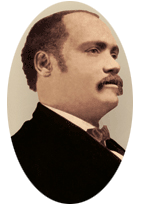 |
|
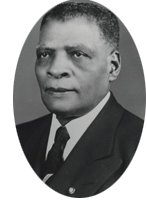 |
|
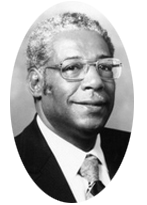 |
|
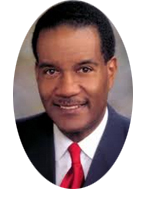 |
| Richard Henry Boyd |
|
Henry A. Boyd |
|
T. B. Boyd Jr. |
|
T. B. Boyd III |
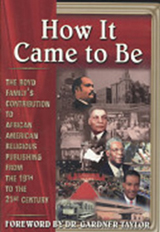 |
|
Richard Henry Boyd, a former slave, who became a Baptist minister, had a dream to establish a means of supplying Sunday school material to black congregations in the state of Texas. In 1895, his dream became a reality when he gained the support of his printing venture and the congregation began to purchase material written and printed by African American men and women. Rev. Dr. Boyd had a dream to take this printing company national and he relocated to Nashville, Tennessee. In 1897, he completed his first mailing of 5,000 circular letters, order blanks, and return envelopes. The company, which was called the National Baptist Publishing Board, became an auxiliary arm of the National Baptist Convention.
By 1903, the company was the only Christian printing house to print Sunday school commentary. The National Baptist Publishing Board became the principal source of religious publications for black Baptists worldwide. By 1906, it was the largest African American publishing company in the United States. The business employed as many as 110 workers. |
Rev. Dr. Boyd served as the Secretary/Treasurer of the company from 1895 until 1922. The leadership mantle was passed down to his son, Dr. Henry Allen Boyd, who served as the leader of the company from 1922 until 1959. The Rev. Dr. T. B. Boyd Jr., the nephew of Dr. Henry Allen Boyd and the grandson of Rev. Dr. Richard Henry Boyd, became the third generation of Boyds to lead the company. He served as the Secretary/Treasurer of the company from 1959 until 1979. T.B. Boyd Jr. broadened the demographics of the company by changing the name from the National Baptist Publishing Board to R. H. Boyd Publishing Corporation. With the named change, they were able to offer a religious material from diverse market demographics regardless of denominational and ethnic background. This was necessitated by a legal battle that occurred between R.H. Boyd and the officers of what is now the National Baptist Convention, USA, Inc. The Boyd family won the suit and maintained their publishing company. Dr. T. B. Boyd III assumed the role of President/CEO of the company in 1979, making it the fourth generation of Boyds to run this now 107-year-old company.6
According to the book about this remarkable family by Bobby L. Lovett, there are at least three primary characteristics that allowed them to maintain a family publishing business for more than one hundred years. Several of these characteristics are obviously applicable to bringing together and keep together generations of the church.
1. Richard Henry (R. H.) Boyd (1843–1922), the family patriarch, was a strong believer in family and family participating in the family business. He and his wife, Harriett, had nine children. Boyd and his wife made sure that all of their children were reared in church. When they were older, the children stayed in church and some were always taught the family business.
Application: Adults need to ensure that their children stay in church and must take them to church. Also, churches must do more to purposely create programs that serve families at every stage of development. Nurseries are needed and programs are needed for children, pre-teens and teens, young adult women, young adult men, middle-aged adults, and seniors. People will not and should not stay in churches where their basic needs are not met. Also, we should not expect the church to meet our needs unless we also financially and physically support the needs that others have in the church.
2. R. H. Boyd never stopped expanding his business. He marketed and sold black dolls, pews, fans, pulpits, and pipe organs, and in 1908 and was one of the founders of the One Cents Savings and Trust Bank, now Citizens Savings and Trust Bank. He also kept busy learning publishing, and he wrote 14 books. Now predominately a publishing company, it has continued to expand its publishing offerings.
Application: The Black Church in America has done a good job of maintaining many of its historical traditions and theological positions of the last two hundred years. However, the same cannot be said for it remaining relevant. Traditions are needed; they help us understand who we are and how we arrived at where we are. However, if these traditions no longer meet the needs of current generations, why not drop some of them and add to others? For example, shorten tenures for church offices, and do away with age barriers to holding offices. Although most churches will say that they do not have age barriers and will allow any willing worker to work, just check the ages of those who lead in their trustee ministry, head their Sunday or Sabbath School, lead their Women’s Departments, and give leadership to annual church celebration. The ageism becomes clear. This type of tradition is not necessary and harms the potential for young adult involvement in churches.
Further, today’s young adults may be interested in Earth Day, Anti-Violence Campaigns, and investing. These are far different concerns than those of the Black Church of the 1950s and 1960s, many of which have not changed. What can be done to include current interests of young adults and teens as primary activities in which the church participates and financially supports through its budget?
3. R. H. Boyd always gave back and taught his children to do the same. In addition to helping to found a bank that would serve blacks, he was a civil rights advocate, and among his other civil rights activities, he led a boycott against the Nashville Transportation Authority in 1905. This boycott stood as an exemplar for future civil rights bus boycotts by Blacks.
Application: The Black Church is likely to see increased involvement, across generations, if it becomes known as an institution that gives back. The Black Church will not survive if it continues to give to the same schools, the same causes, fund the same gatherings of its members, and financially support only the interests of its senior (60 and older) leaders. The historically black denominations that comprise the black church proper must begin by leading the way. Just think how exciting it would be if the National Baptist Convention, USA, Inc. and the Church of God in Christ announced that they were each going to spend one million dollars to provide and gain other funding to ensure that young people ages 21–35 were computer-literate and placed in primary leadership roles in both denominations? My guess is that these denominations would change and grow overnight and would find new relevancy in so many other areas in which they are now being killed off due to traditionalism and an unwillingness to change.
A.D. PORTER FUNERAL HOME, LOUISVILLE, KY
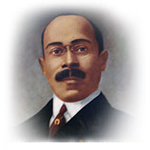 |
|
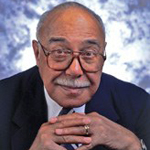 |
| Mr. Arthur D. Porter, Sr. Founder |
|
Woodford R. Porter Sr. |
|
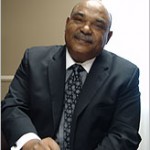 |
|
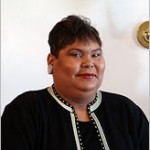 |
| Woodford R. Porter Jr. |
|
Alysia Danielle Porter |
In 1907, Mr. Arthur D. Porter Sr. established the A. D. Porter Funeral Home in Louisville, Kentucky, with the purpose of providing high-quality services. Since its inception the funeral home has been under the leadership of four generations of the Porter family: Mr. Arthur D. Porter, the founder; Mr. Woodrow R. Porter Sr.; Mr. Woodrow R. Porter Jr.; and Alysia Danielle Porter. Under the leadership of Mr. Woodrow “Woody” Porter Jr., the company has opened another location, where they are open to serve other ethnic backgrounds in the Southwestern Louisville area. In 2007, Ms. Alysia Danielle “Dani” Porter became the fourth generation to join the business to continue the family legacy.7 Most of the characteristics that have made this a strong and enduring family business are the same as those of the Boyd Family.
THE MCKISSACK FAMILY
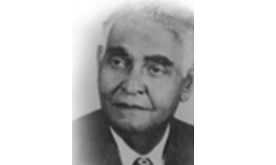 |
Moses McKissack III
|
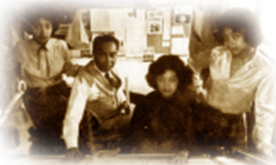 |
William DeBerry McKissack and his daughters,
Andrea, Cheryl and Deryl
|
 |
Deryl McKissack |
In 1905 in Nashville, Tennessee, brothers Moses McKissack III and Calvin McKissack launched what is now the oldest minority-owned architecture/engineering firm in the United States. Their grandfather, Moses Sr., was a slave who learned the trade of building from his owner and began a family legacy in the building and architecture industry.
In 1942 the McKissack firm was awarded a $5.7 million contract to design and build the 99th Pursuit Squadron Airbase at Tuskegee, Alabama. It was the largest federal contract at that time awarded to an African American architectural firm. In 1968, William DeBerry McKissack, the youngest son of Moses III, took the helm as president of the firm. He nurtured the talents of his daughters, Andrea, Cheryl and Deryl, who all excelled in the field of architecture and engineering.
In 1975, Leatrice, the widow of William DeBerry, assumed the position of chief executive officer of the firm. Then in 1990, as an outgrowth of the McKissack firm founded in Nashville, Deryl McKissack became the fifth generation to carry on the family building legacy by establishing McKissack & McKissack in Washington, DC. In 1996, McKissack & McKissack was awarded the largest contract to date, initially overseeing fire-recovery efforts at the Main U.S. Treasury Building, and later providing program management services for renovation of the entire 500,000-square-foot building. In 2002, Deryl McKissack expanded the firm by opening an office in the Chicago area, ultimately working on programs for the Chicago Public Schools, Chicago Housing Authority, and O’Hare Airport Modernization Program.8
Just as each of the aforementioned black business were passed down again and again from one generation to the next, it is vital for the Black Church to begin to bridge the generation gap in order to pass down its rich heritage. Most importantly, we must do so to keep our covenant with God and to provide each generation the wisdom, theology, and strength that it is to then pass to the next generation. Unless the torch is passed again and again, like so many organizations and movements in our community the Black Church will become a shell of itself, and irrelevant.
V. Making It a Memorable Learning Moment
To include all of the generations in your church during the worship services, incorporate these ideas:
- Include a representative of each generation as part of the planning and during your worship services.
- Musical selections should represent the following genres of music:
- Metered hymns
- Traditional gospel
- Contemporary gospel
- Hip-Hop music
- Occasionally, during interpretive dance (Liturgical or Mime) you can include various generations of the church.
- Allow each family to provide a pictorial collage of all of the generations of their family in your fellowship hall or other areas of the church. If you do not have the space, scan the photos and create digital albums that can be used during various services for years to come. For instance, photos can be displayed during the 50th or 100th anniversary of a church. A picture of one family can be shown if an individual is being honored, or groups of pictures can be shown if a board or ministry is being honored. These pictures can also be used as teaching tools during Black History Month, in Sunday School, and during Vacation Bible schools to show the history of the families in your church as contributors to the history of the country.
- Form a Generations Study Committee. This committee will be comprised of representatives of all the generations of the congregation. The purposes of the committee could be to (1) gain knowledge and understanding of the demographics of the congregation, (2) determine how to attract missing generations, (3) determine the best methods to incorporate every generation into leadership roles and ministries of the church, and (4) make recommendations to the congregation based on the study findings. The committee should be able to complete its work in 6 months or less.
Suggested Books
 |
Hicks, Dr. Rick and Kathy. Boomers, Xers and Others Strangers: Understanding the Generational Differences That Divide Us. Tyndale Publishers, Inc. 1999. |
|
|
 |
Johnson, Meagan and Larry. Generations, Inc.: From Boomers to Linksters—Managing the Friction Between Generations at Work. AMACOM, 2010. |
|
|
 |
Young, H. Bernard, Sr. Bridging the Gap: A Practical Guide for Connecting Generations of the Church. XLIBRIS, 2012. |
Notes
1. “A Charge to Keep I Have.” By Charles Wesley. Music by Lowell Mason. African American Heritage Hymnal. Chicago, IL: GIA Publications, 2001. #468
2. “Jesus Will.” By Rev. James Cleveland. James Cleveland: In Honor of the King, The Music Lives Forever. (INDIE) MMV Calvin Records, 2005.
3. “When Sunday Comes.” By Donald Lawrence. Donald Lawrence and the Tri-City Singers. Restoring the Years. Brentwood, TN: EMI Gospel, 2003.
4. “We’re Blessed.” By Fred Hammond and Tommy Walker. The Essential Fred Hammond. New York, NY: Verity Records/Legacy, 2007.
5. “Awesome.” By Charles Jenkins. Charles Jenkins and Fellowship Chicago: The Best of Both Worlds. New York: EMI Records, 2012.
6. www.rhboydpublishing.com (accessed 9 January 2013).
7. www.adporters.com (accessed 9 January 2013).
8. www.mckissackdc.com (accessed 9 January 2013).
|